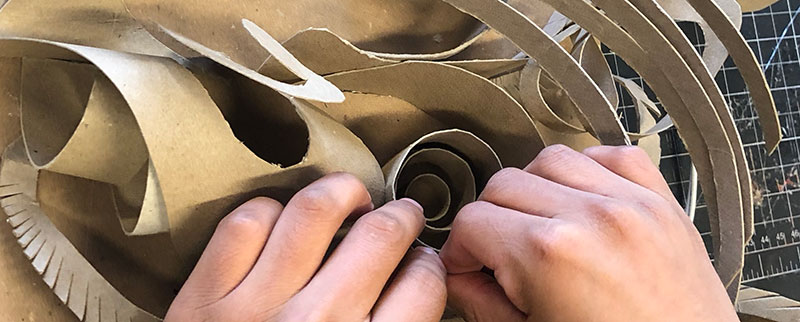This video provides a comprehensive look at how to photograph your 2D & 3D artwork, showing common problems and with practical techniques to achieve photos that will accurately represent your artwork.
- 5 min. video (3D art)
- 8 min. video (2D art)
- 40 min. video (mistakes)
- 120 min. video (2D & 3D art)

Having high quality photos of your artwork is more important today than ever: you need photos of your artwork for your website, social media, applying to art schools, and for students doing remote learning during the pandemic.
Discussion led by Art Prof Clara Lieu.

Video Walkthrough
Photographing 2D artwork
- “Artists live and die by their photographs.”
- DSLR vs. Smart Phone
- Photoshop
- Natural light vs. Lighting equipment
- Wearable art: Portfolio vs. Social Media
- Brightness
- Color balance
- Character Design sheet layout
- Slides
- Printmaking images
- Detail shots for 2D artwork
Photographing 3D artwork
- Backdrops for 3D artwork
- Cropping
- Your point of view
- Lighting
- Set up view, camera view
- Reflected light
- Photo editing process
- Using videos
- Layout & showing multiple views
- Detail shots for 3D artwork
- How to show scale


Prof Lieu’s Tips

There is a misconception that taking a good 3D photo is inherently time consuming. It really doesn’t have to be!

Once you have identified where in your living space has natural light, it’s just a matter of sticking a piece of paper against the wall to take the photo.
I use watercolor paper for the backdrop, or something like Bristol board works too. Thicker paper is better as it’s much less likely to wrinkle and therefore can be used often.
Equipment
For high end photography only; a smartphone is sufficient in the majority of situations.


As a free educational source, Art Prof uses Amazon affiliate links (found in this page) to help pay the bills. This means, Art Prof earns from qualifying purchases.


